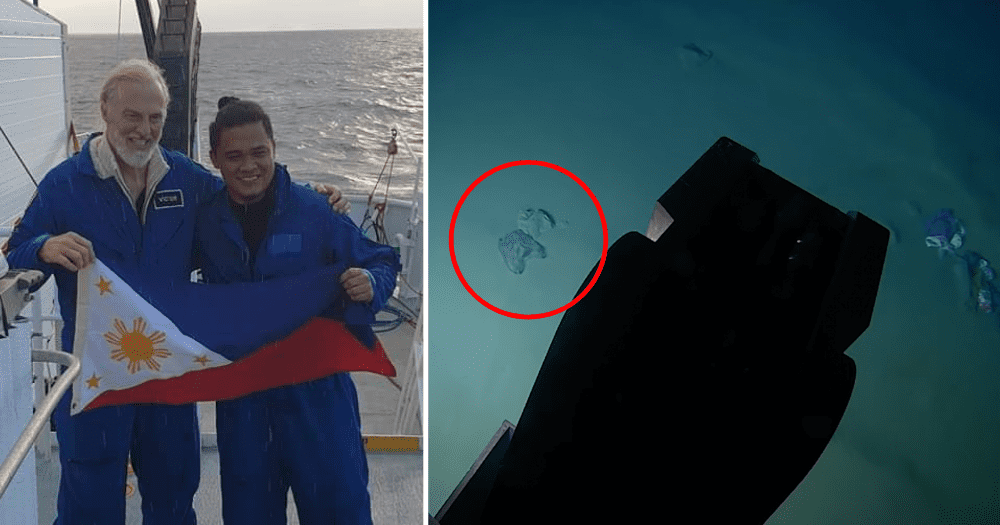If you’re an explorer visiting for the first time one of the deepest trenches of the ocean, you’re probably expecting to find many cool and new things, such as deep-sea creatures. For Dr. Deo Florence Onda, who just returned from visiting the Philippine Trench, the findings included something much more ubiquitous – plastic waste.

Dr. Onda, a microbial oceanologist from the University of the Philippines Marine Science Institute, dove into the Emden Deep, part of the Philippines Trench, along with Victor Vescovo from Caladan Oceanic, an undersea tech company. It’s the third deepest spot on Earth and no human being had ever visited the place before.
The trench reaches a depth of 10,540 meters and was first described in 1950 and then again in greater detail in 1970. For Dr. Onda, this was an opportunity to see what was happening down there with his own eyes. He told CNA that he expected to see “scary, crawling things” through the windows of the submarine but instead found something different.
Following the descent, Dr. Onda found plastic bags, food packaging, a teddy bear, and even clothes. He first believed that the white material floating in the water was a jellyfish, until they approached closer and realized it was just plastic. He was impressed by how intact was the plastic, describing it “as if they just came from the supermarket.”
Vescovo said the amount of human debris found in the trench, scattered around in pockets on the seabed, was “pretty extensive.” At such depths where oxygen and sunlight are absent, plastic and other materials do not degrade, Vescovo stated. For the researchers, it’s uncertain how the plastic made its way to the deep of the ocean.
Still, they suspect the source could have been coastal communities near the trench, or the debris could have been washed over by ocean currents from Hawaii or other Pacific Islands. Plastic at such remote places isn’t something new. In another expedition in 2019 to the Mariana Trench, Vescovo found plastic waste at the bottom.
While the expedition wasn’t considered a marine scientific research activity, the explorers’ discovery highlighted the worrying extent and impact of human activities on the planet. Plastic waste is one of the largest environmental challenges the world is currently facing, with governments and companies taking action at single-use plastics.
Bottles and food packaging are the most commonly discarded type of plastic. They are made almost exclusively from fossil fuels and are very hard to recycle, which means they usually end their short lifecycle by polluting the oceans. Asian countries like the Philippines and China produce a large number of such plastics every year.
Over time, plastic items in the ocean can break down into smaller pieces, known as microplastics. They can be the size of a rice grain or even smaller, making them easy to be ingested by sea creatures. These very small pieces of plastic are literally all over the place, even in some of the world’s most seemingly inaccessible regions, such as the Everest.
“The Philippine Trench is already so deep, but human pollution was still able to reach it. What more for shallower environments like coral reefs and seagrass beds?” Onda told The Inquirer. “[If we don’t do anything], I wouldn’t be surprised if I would get confused if I was in the Philippine Trench or in Manila Bay.”


